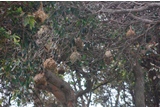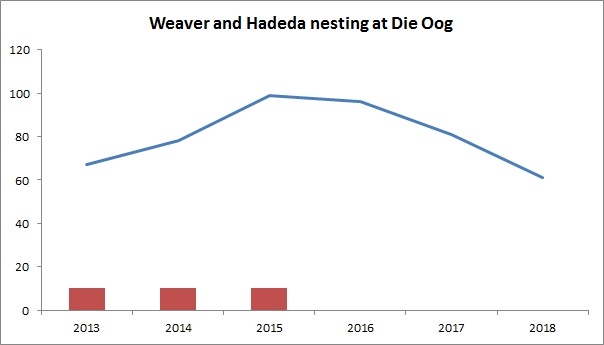Weaver news
|
In many of these years a pair of Hadedas has also nested in the poplars near the weaver nests. Hadedas and Cape Weavers often nest together, and it may be that this increases the vigilance against predators. Hadedas sometimes manage to repel avian predators like crows and raptors although sometimes the predators are successful. Thus Hadedas could help reduce predation on the weaver nests. A pair of Hadedas bred in the poplars with the weavers in 2013-2015 but not in more recent years. Interestingly the number of weaver nests has decreased in the last few years, suggesting that the presence of Hadedas previously did help the Cape Weavers. In 2015 there was also a small colony of Reed Cormorants in the poplars. Read about the nesting association of the weavers, Hadeda, and cormaorants at this site in Biodiversity Observations. See colony record in PHOWN (PHOtos of Weaver Nests) at Die Oog colony.
|













